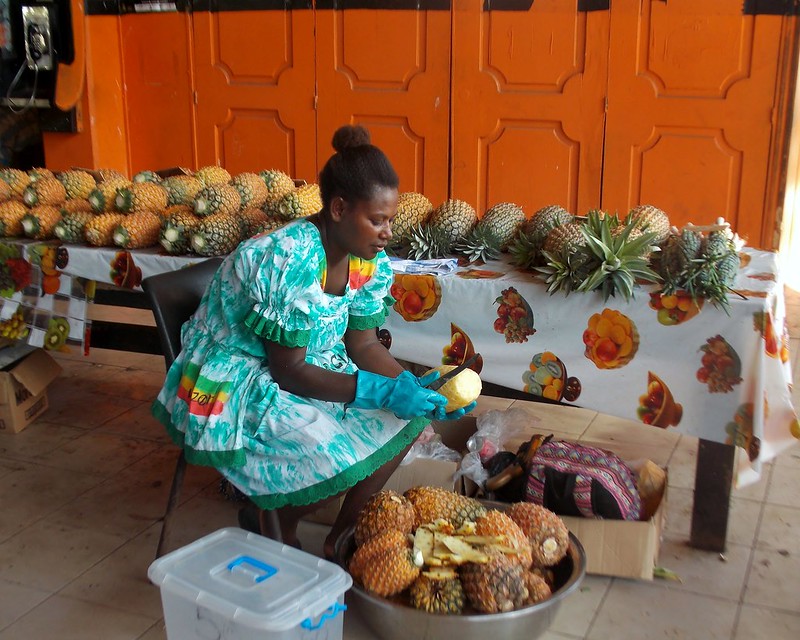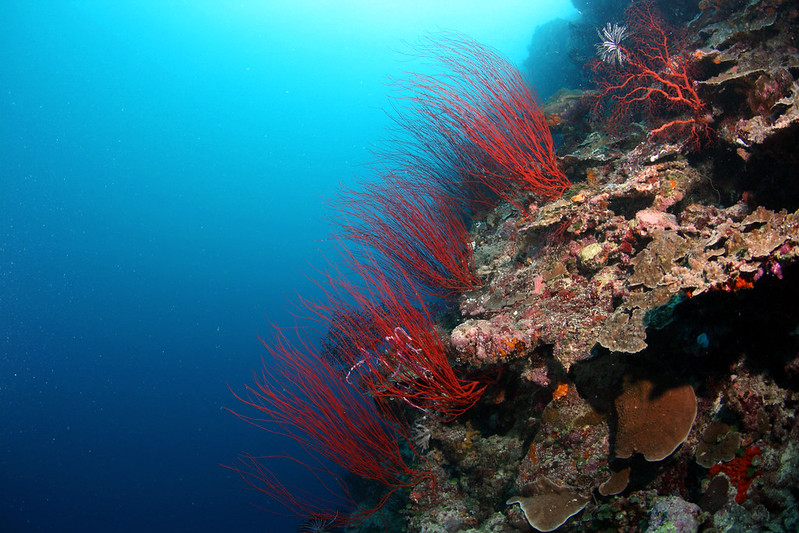Local knowledge will help save Pacific Nations from climate change
New research shows that for an adaptation initiative to be successful inPacific Island nations, the local community must take the lead.
T
hey contribute only 0.03% of global carbon emissions, but small island developing states, particularly in the Pacific, are at extreme risk to the threats of climate change.
Our study, published today in the journal Nature Climate Change, provides the first mega-assessment on the progress of community-based adaptation in four Pacific Island countries: the Federated States of Micronesia, Fiji, Kiribati and Vanuatu.
Pacific Island nation communities have always been resilient, surviving on islands in the middle of oceans for more than 3,000 years. We can learn a lot from their adaptation methods, but climate change is an unprecedented challenge.
Effective adaptation is critical for ensuring Pacific Islanders continue living fulfilling lives in their homelands. For Australia’s part, we must ensure we’re supporting their diverse abilities and aspirations.
No quick fixes
Climate change brings wild, fierce and potentially more frequent hazards. In recent months, Cyclone Harold tore a strip through multiple Pacific countries, killing dozens of people, levelling homes and cutting communication lines. It may take Vanuatu a year to recover.
Expert commentary from 2019 highlighted that many adaptation responses in the Pacific have been short-sighted and, at times, even inadequate. The remains of failed seawalls, for example, litter the shorelines of many island countries, yet remain a popular adaptive solution. We cannot afford another few decades of this.

The people of Vanuatu are having to rebuild their lives after Cyclone Harold. Photo by gérard/Flickr
International climate aid commitments from rich western countries barely scratch the surface of what’s needed, yet it’s likely funding will dry up for regions like the Pacific as governments scramble together money for their own countries’ escalating adaptation costs.
This includes Australia, that has long been, and continues to be, the leading donor to the region. Our government contributed about 40% of total aid between 2011 and 2017 and yet refuses to take meaningful action on climate change.
Understanding what successful adaptation should look like in developing island states is urgent to ensure existing funding creates the best outcomes.
What works
Our findings are based on community perspectives. We documented what factors lead to success and failure and what “best practice” might really look like.
We asked locals about the appropriateness, effectiveness, equity, impact and sustainability of the adaptation initiatives, and used this feedback to determine their success.
The results were mixed. While our success stories illustrate what “best practice” involves, issues still emerged.
Our top two success stories centred on community efforts to protect local marine ecosystems in the Federated States of Micronesia and Vanuatu. Nearby communities rely on these ecosystems for food, income and for supporting cultural practice.
One initiative focused on establishing a marine park with protected areas while the other involved training in crown-of-thorns starfish control. As one person told us:
we think it’s great […] we see the results and know it’s our responsibility.
Initiatives that focus on both the community and the ecosystem support self-sufficiency, so the community can maintain the initiatives even after external bodies leave and funding ceases.
In these two instances, the “community” was expanded to the whole island and to anyone who utilised local ecosystems, such as fishers and tourism operators.
Through this, benefits were accessible to all: “all men, all women, all pikinini [children],” we were told.
Future-proofing
In Vanuatu, the locals deemed two initiatives on raising climate change awareness as successful, with new scientific knowledge complementing traditional knowledge.
And in the Federated States of Micronesia, locals rated two initiatives on providing tanks for water security highly. This initiative addressed the communities’ primary concerns around clean water, but also had impact beyond merely climate-related vulnerabilities.
This was a relatively simple solution that also improved financial security and minimised pollution because people no longer needed to travel to other islands to buy bottled water.

Community efforts to protect local marine ecosystems in the Federated States of Micronesia have been particularly effective. Photo byKlaus Stiefel/ Flickr
But even among success stories, standing the test of time was a challenge.
For example, while these water security initiatives boosted short-term coping capacities, they weren’t flexible for coping with likely future changes in drought severity and duration.
Adaptation needs better future planning, especially by those who understand local processes best: the community.
Locals to lead
For an adaptation initiative to be successful, our research found it must include:
1. local approval and ownership
2. shared access and benefit for community members
3. integration of local context and livelihoods
4. big picture thinking and forward planning.
To achieve these, practitioners and researchers need to rethink community-based adaptation as more than being simply “based” in communities where ideas are imposed on them, but rather as something they wholly lead.
Communities must acknowledge and build on their strengths and traditional values, and drive their own adaptation agendas – even if this means questioning well-intentioned foreign agencies.
Pacific Islands are not passive, helpless victims, but they’ll still need help to deal with climate change.
Pacific Island leaders need more than kind words from Australian leaders.
Last year, Fijian prime minister, Frank Bainimarama, took to Facebook to remind Australia:
by working closely together, we can turn the tides in this battle – the most urgent crisis facing not only the Pacific, but the world.
Together, we can ensure that we are earthly stewards of Fiji, Australia, and the ocean that unites us.
Together, we can pass down a planet that our children are proud to inherit.
The ideas presented in this article aim to inspire adaptation action – they are the views of the author and do not necessarily reflect those of the Global Center on Adaptation.